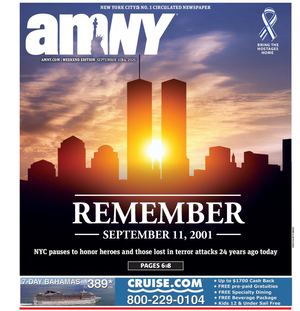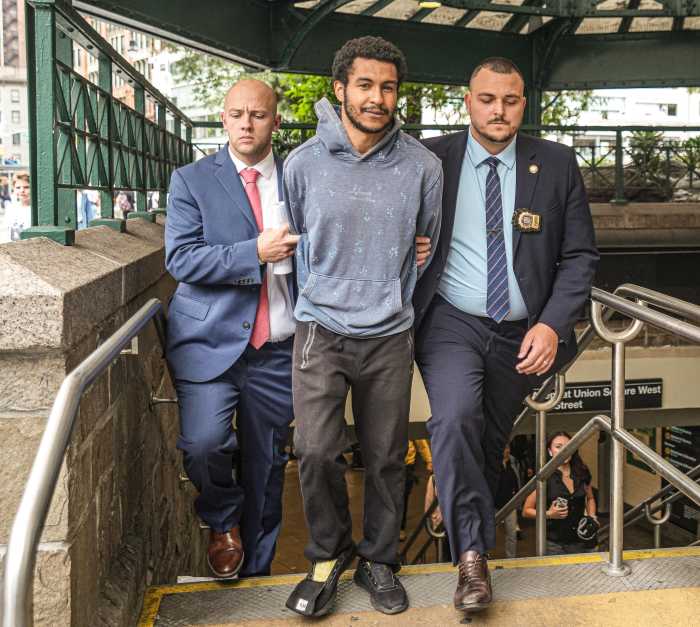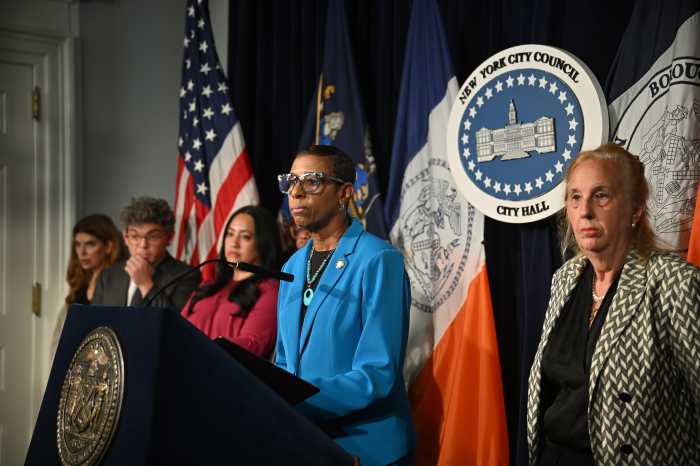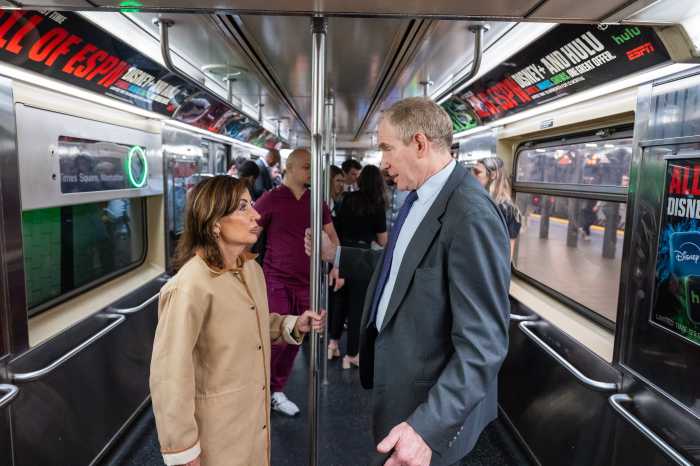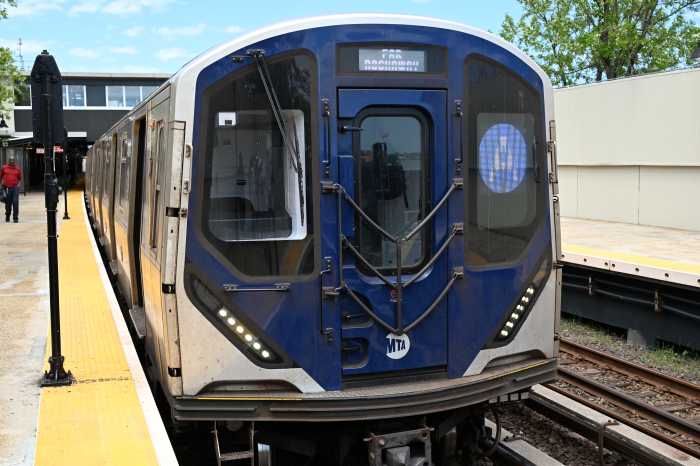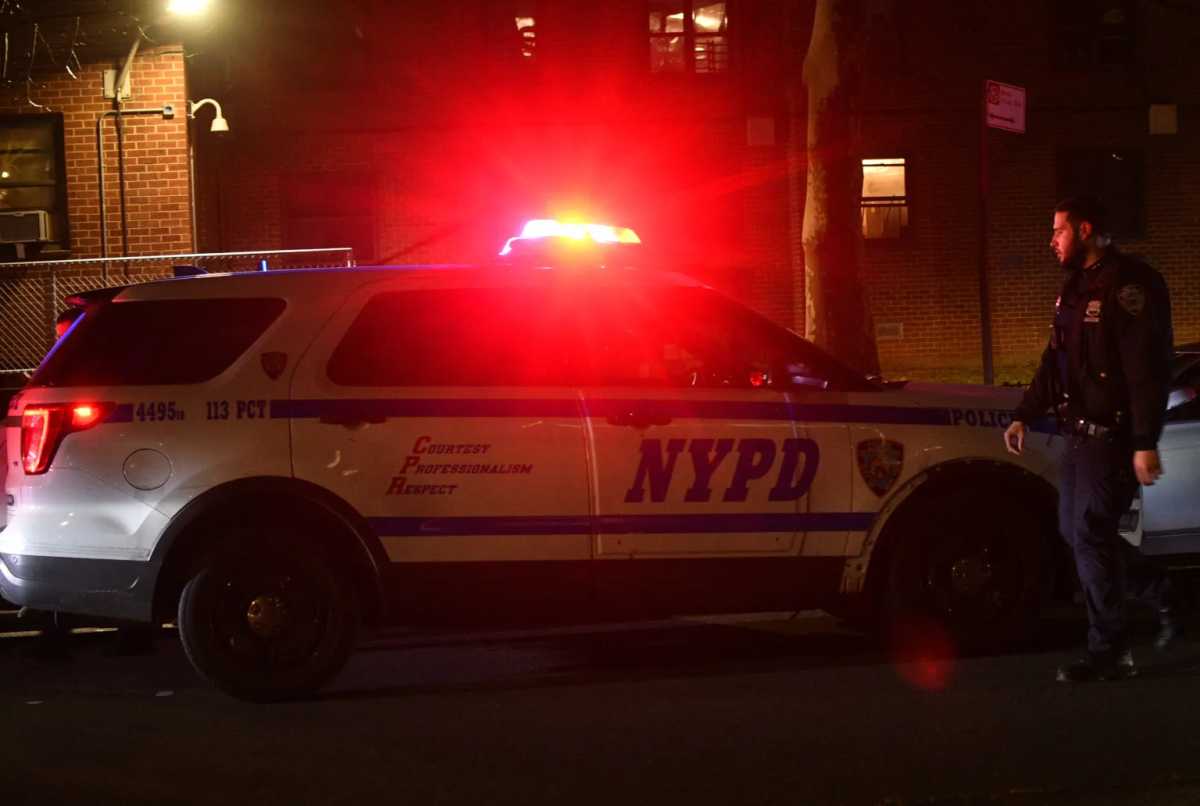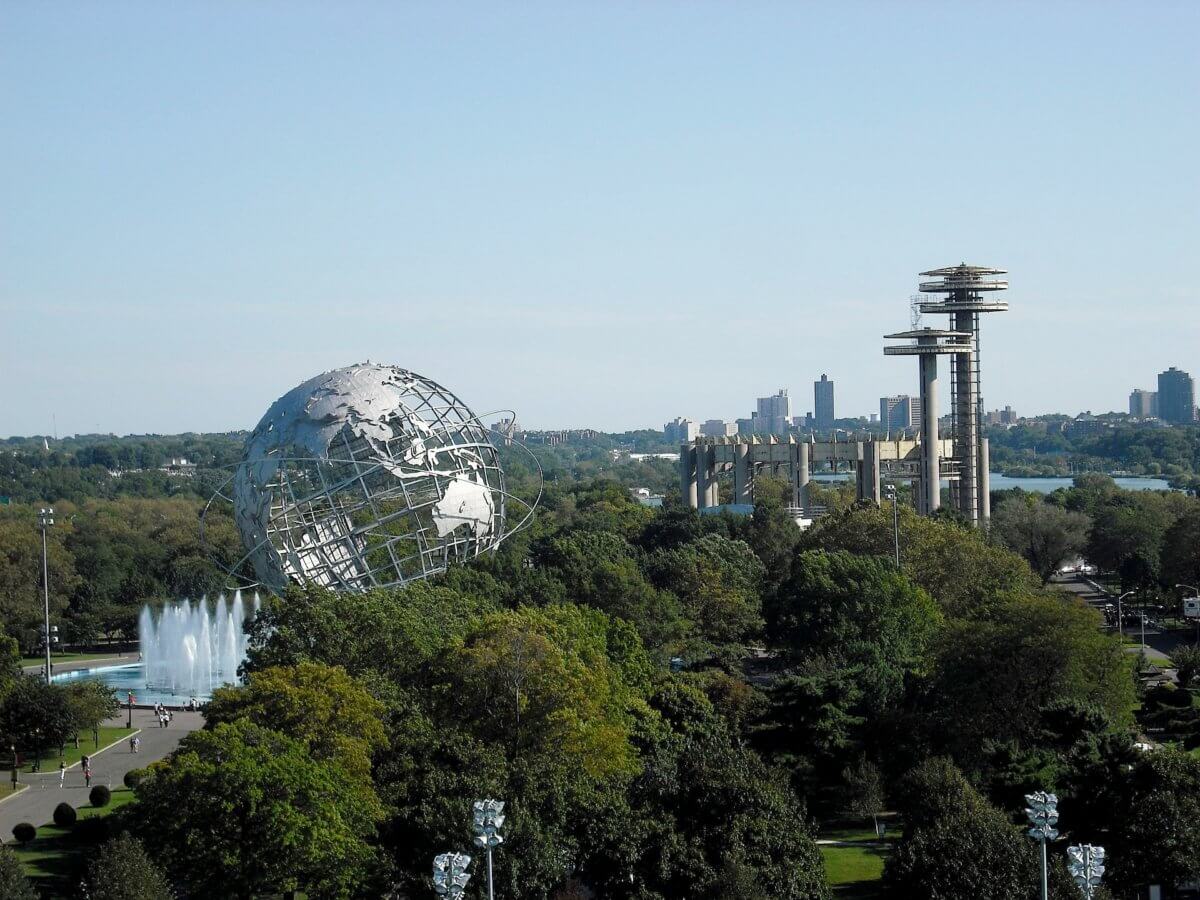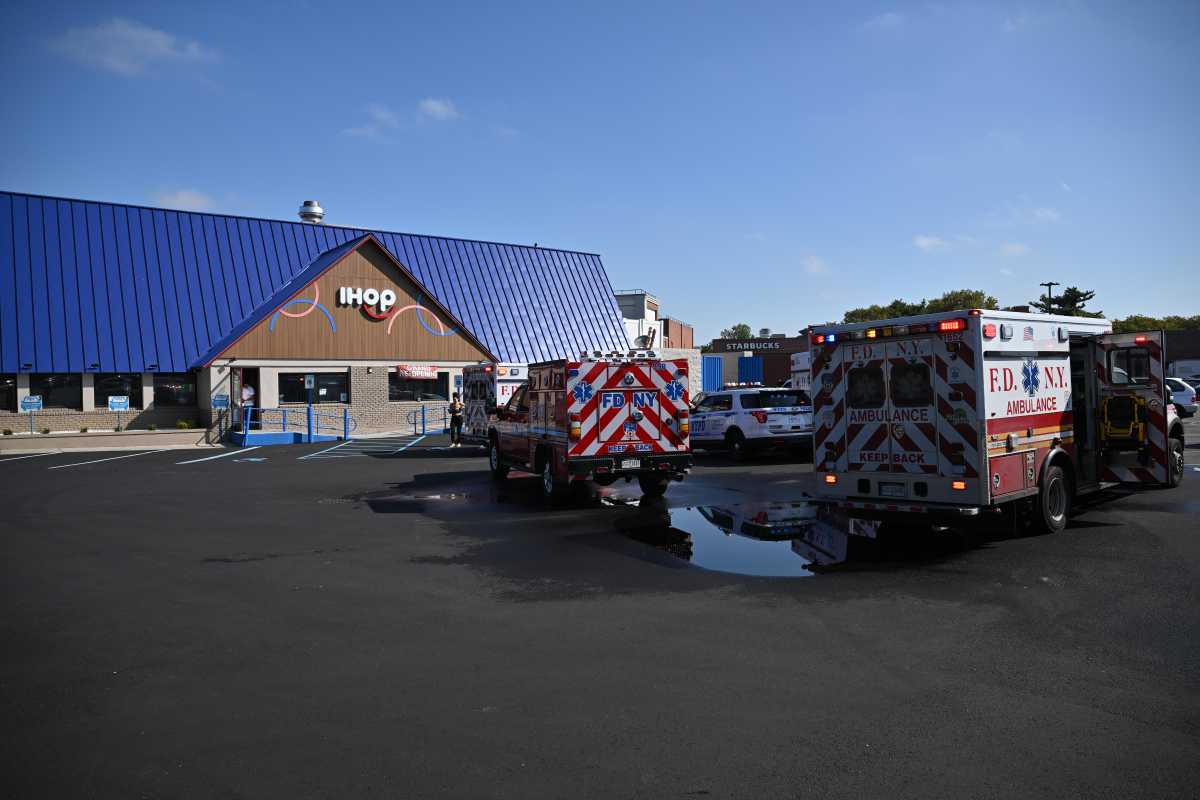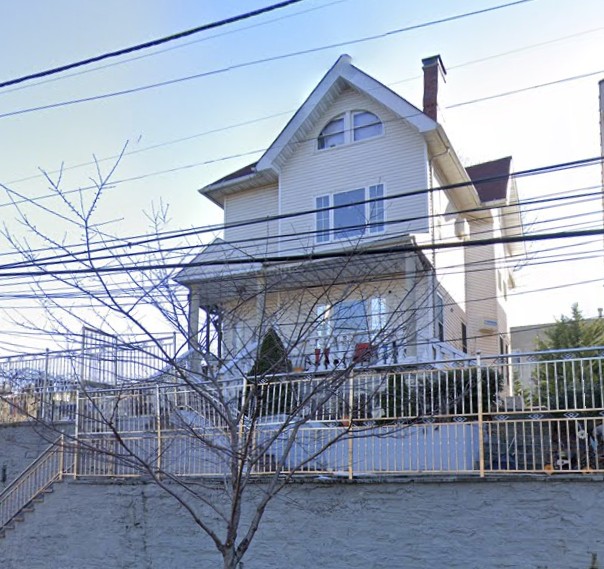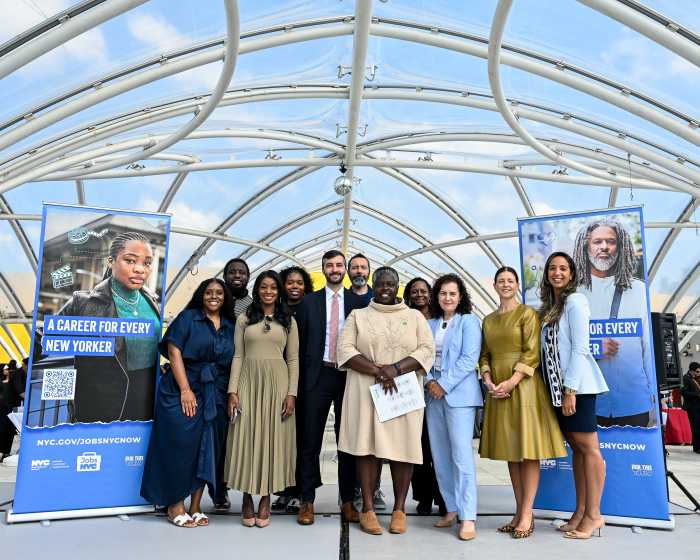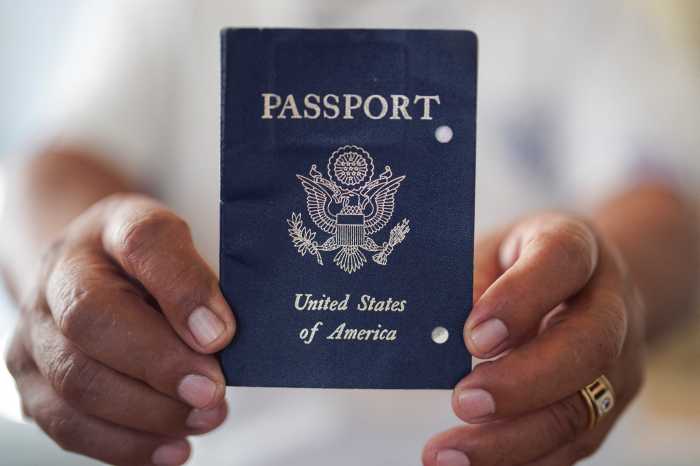
Facing plummeting MTA ridership, transit advocates have launched the Bus Turnaround Campaign to fix a bus system in “crisis.”
Stuck behind cars and behind the times, the city’s bus system has lost 46 million annual trips between 2010 and 2015, according to a recent city report, which notes that the drop of rides is equivalent to subtracting San Antonio’s entire yearly bus ridership.
“New York City has a bus ridership and bus quality crisis,” said John Raskin, executive director of the Riders Alliance, at a Wednesday rally outside of Brooklyn’s Borough Hall announcing the new campaign. Groups behind him held up signs that read “make buses work” and “bunching is for bananas, not buses.”
The alliance has teamed up with a slew of advocacy groups, including TransitCenter, the Tri-State Transportation Campaign and the Straphangers Campaign to call for a complete reimagining of New York’s bus network.
To breathe life back into buses, the groups demand several “practical strategies” from city and the MTA: Restructure problem routes; make boarding buses easier; provide more real-time service information and, most importantly, start giving all buses priority on the city’s busy streets to increase their painfully slow paces.
“Many of the changes that we’re proposing can be rolled out in months or in years,” said Tabitha Decker, director at TransitCenter, “not in decades or a generation.”
Decker added that the ridership reflects service quality. Bus speeds are down from an average 7.8 mph in 2000 to 7.4 mph, according the campaign report, which ranks the city’s buses among the slowest in the nation.
Part of what the campaign calls for is a systemwide expansion of tools used successfully in Select Bus Service routes. Increase bus speeds by supplying more routes with dedicated lanes and coordinate more traffic signals to offer green lights to approaching buses. Build more curb extensions to make bus stops safer and more pedestrian-friendly.
Advocates also want “queue-jump lanes,” or an additional lane built out near an intersection, which would allow only for buses to pass the long line of cars waiting at a red light.
If the rally was any indication, there is political support behind the suggestions. A veritable busload of city and state elected officials were on hand to back the campaign.
“I live close to and work close to a subway line. For New Yorkers who don’t, the world is very unfair,” said Squadron, pointing out the realities of the city’s transit deserts. “The buses are the worst way to get around the city of New York.”
Councilman Ydanis Rodriguez, chair of the Transportation Committee, pledged to hold a hearing based on the campaign recommendations within the next few months.
Kevin Ortiz, an MTA spokesman, said in an email that the agency is “constantly re-evaluating bus routes to improve reliability and to optimize routes in order to serve areas where the demand is highest.” He noted that it’s already working on several recommendations, like route overhauls on Staten Island and using real-time data to improve service.
Passers-by who ride the bus regularly praised the campaign.
“Buses are horrible and really need improvements. So I’m glad we have a forum where we can express ourselves,” said Gloria Jones, from Flatbush. “Because I’ve been burning inside over the bad service.”
